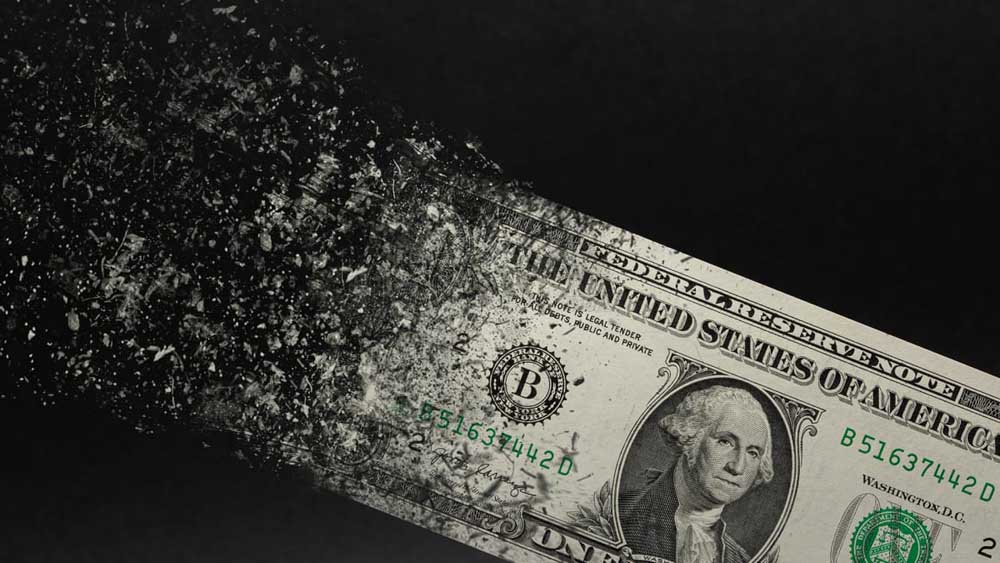Fed Inflation Gauge Hits 2-Year Low In May, Falls Below 4%, As Rate Hikes Take Hold
Published 5:40 am Friday, June 30, 2023

- Fed Inflation Gauge Hits 2-Year Low In May, Falls Below 4%, As Rate Hikes Take Hold
The Federal Reserve‘s preferred measure of U.S. inflation slowed again last month, data indicated Friday, with the headline reading falling to a two-year low as the central bank’s relentless rate hikes look to finally be having an effect on consumer price pressures.
The May core PCE Price Index rose 4.6% from last year, down from the 4.7% pace recorded in April just inside the consensus Street forecast of 4.7%. The core index was up 0.3% on the month, the Bureau of Economic Analysis reported, slowing from 0.4% in April and matching the Street consensus forecast.
The headline PCE index rose only 0.1% on the month and 3.8% on the year, with both readings firmly inside analysts’ estimates.
Personal incomes rose by 0.4% while real personal spending was up 0.1% from April’s pace, the BEA noted, a bit lighter than Street forecasts.
Commerce Department data published Thursday showed the closely-tracked core PCE price index for the first quarter, one of the Federal Reserve’s favored inflation metrics, accelerated at a 4.9% pace, topping the 4.4% rate from late last year and coming in just inside the Street’s 5% estimate.
U.S. stocks were notably higher in pre-market trading immediately following the data release, with futures tied to the S&P 500 indicating a 27 point point opening bell gain and those linked to the Dow Jones Industrial Average suggesting a 160 point advance.
Benchmark 2-year Treasury note yields, which jumped to 4.929% prior to the release, fell 5 basis points to 4.887% while 10-year paper was pegged at 3.852%.
The CME Group’s FedWatch tool is now showing an 87% chance of a 25 basis point rate hike from the Fed next month in Washington, up from just 52.6% a month ago. That would take the federal funds rate to a range of 5.25% to 5.5%, with the bulk of bets pointing to a hold on rates in September and November.
Federal Reserve Chairman Jerome Powell double-down on the need for more rate hikes in order to bring inflation back to the central bank’s preferred target earlier this week, telling a panel in Portugal that tight labor markets continue to add to consumer price pressures in the world’s biggest economy.
Speaking as part of a discussion on monetary policy at the European Central Bank’s annual retreat in the costal Portuguese city of Sintra, Powell said that a “strong majority’ of his colleagues see the need for “two or more” rate hikes between now and the end of the year, adding that the labor market continues to pull the U.S. economy into solid growth.
Powell, who joked that the Fed’s June decision to hold rates steady at between 5% and 5.25% earlier this month in Washington was neither a pause or a skip but rather a “decision to maintain the Fed Funds rate at its current level for this meeting”, said that while the central bank has “come a long way” on rate hikes, but said that policy rates haven’t been restrictive for too long.
“Quite a strong majority (of Powell’s Open Markets Committee colleagues) wanted two or more rate hikes and the reason for that is that was, if you look at the data over the last quarter, there was stronger-than-expected growth, a tighter-than-expected labor market and higher-than-expected inflation,” Powell added. “That tells us that while policy rates are restrictive, they may not be restrictive enough.”
“”We’ve got a very strong labor market where jobs are being created with solid wage gains and that’s driving real incomes, which is driving spending and in turn more demand,” Powell said. “We have only made a decision about the June meeting, but I wouldn’t take moving at consecutive meetings off the table at all.”





